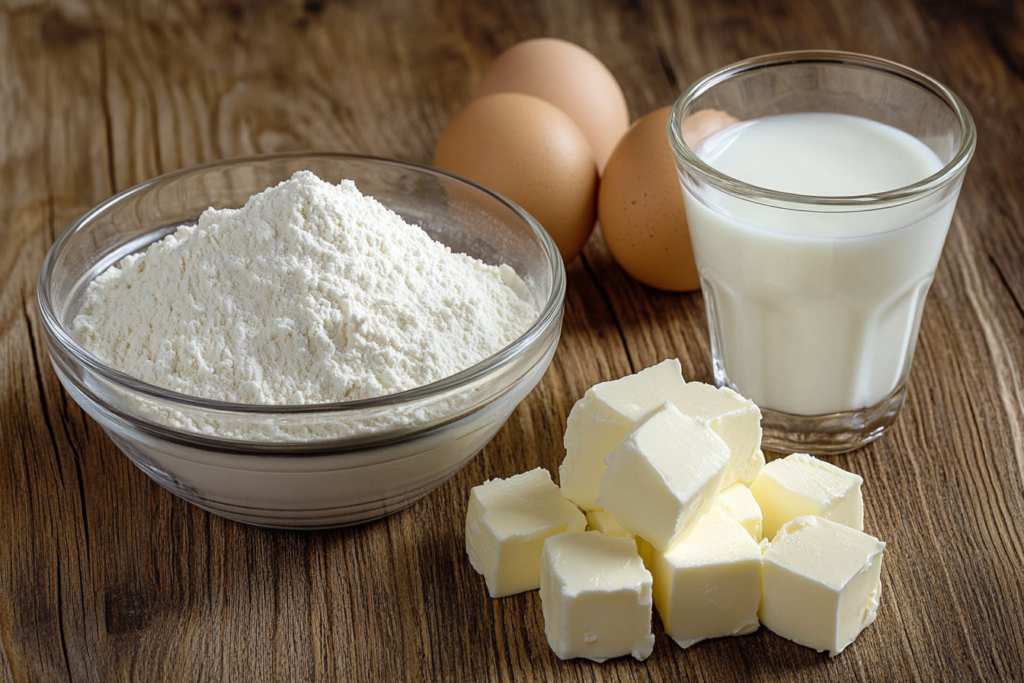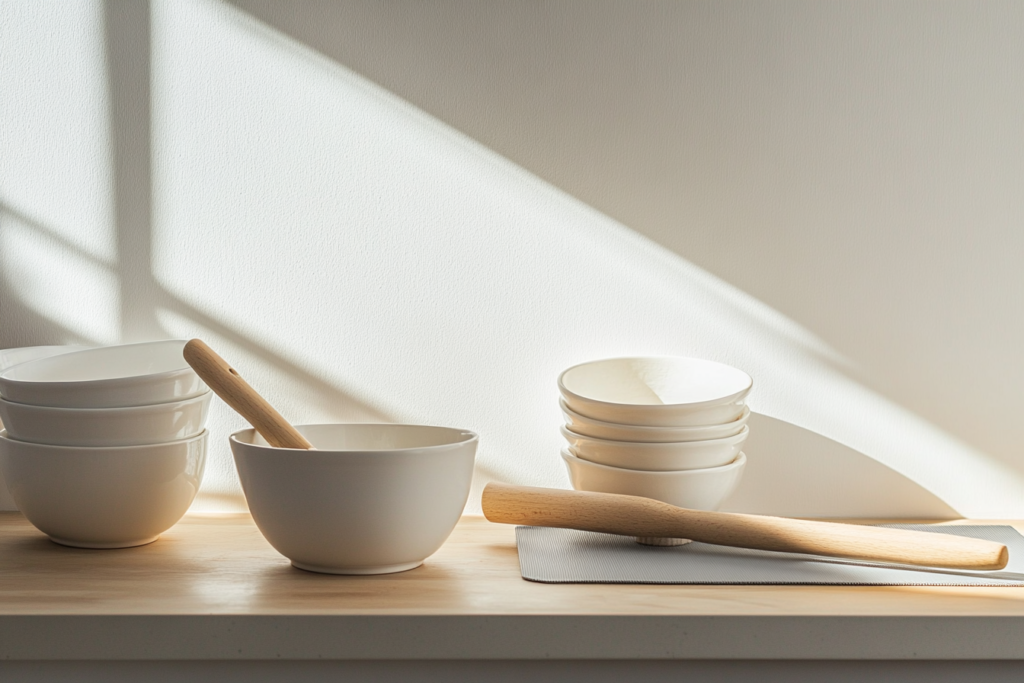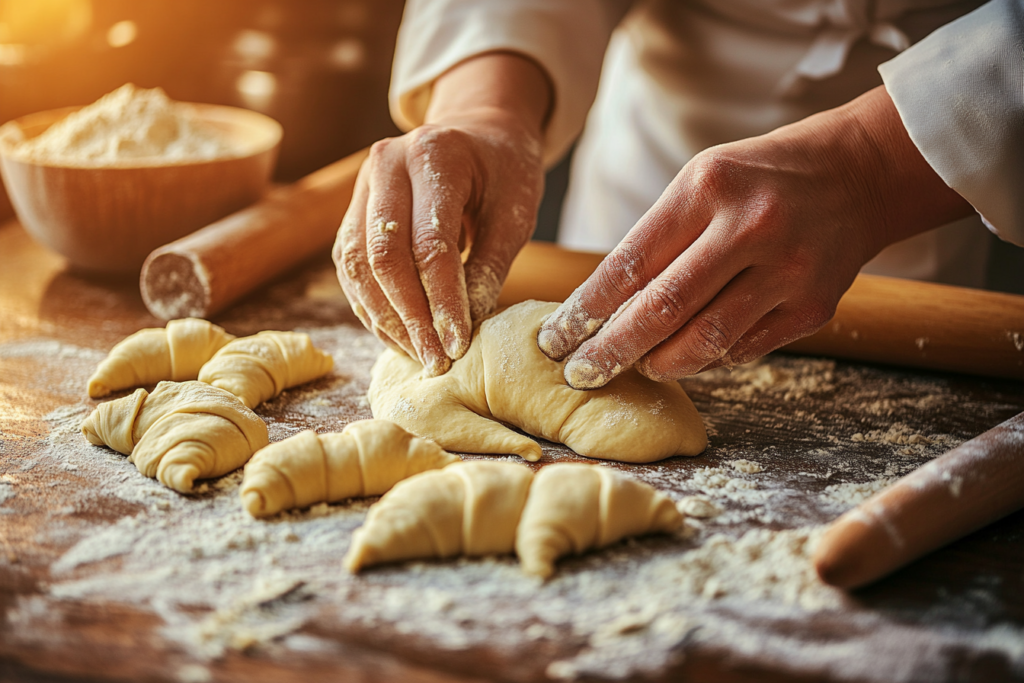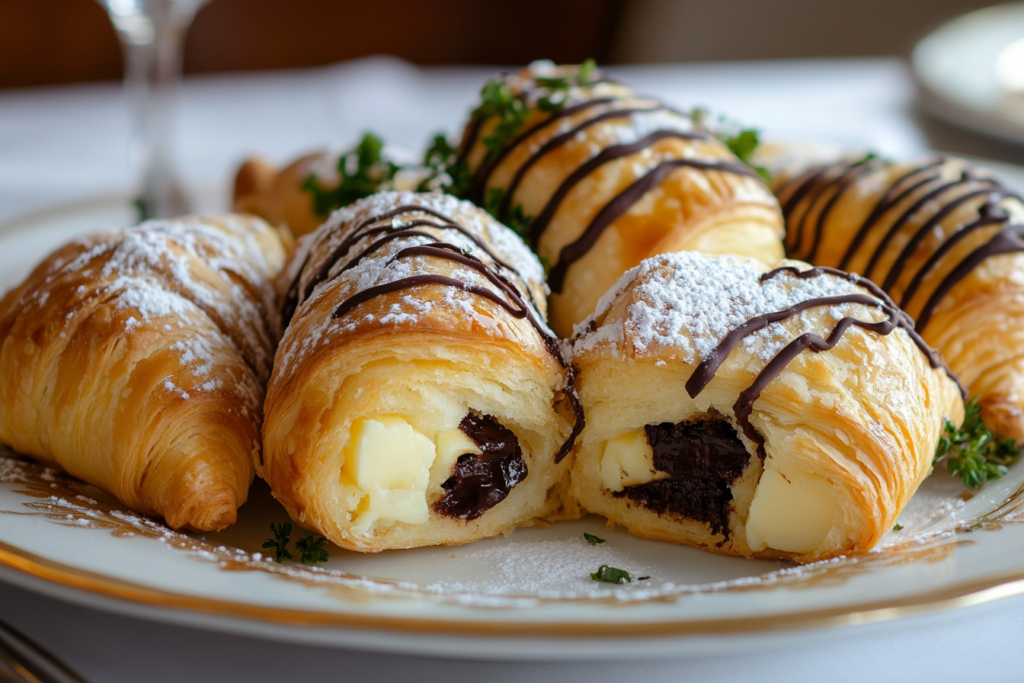Introduction to Gipfeli Recipe
The Origin of Gipfeli Recipe
Gipfeli recipe lovers, rejoice! Gipfeli, pronounced “Gip-fuh-lee,” is a delightful Swiss pastry with a rich history deeply tied to Swiss culture. While its exact origins remain a bit of a mystery, this beloved pastry is thought to have been inspired by the crescent-shaped pastries of Austria and France. Over time, the Gipfeli recipe evolved into a unique Swiss adaptation, offering a slightly denser texture and a distinct twist on the classic croissant.
Why is Gipfeli recipe loved worldwide? It’s simple: versatility. Whether you enjoy it plain, with a hint of jam, or filled with something indulgent like chocolate or almond paste, Gipfeli fits into any breakfast or snack scenario. Plus, its less buttery nature (compared to a croissant) makes it feel a tad lighter—perfect for those who want a treat without going overboard.
Key Ingredients for Making Gipfeli
Importance of Quality Ingredients
Here’s the thing about Gipfeli recipe: the magic lies in the ingredients. You don’t need a mile-long grocery list to whip these up, but the quality of what you use can make or break the recipe. Think of it like building a house—your foundation (the ingredients) needs to be solid.

So, what goes into a perfect Gipfeli recipe? Let’s break it down:
Ingredients Table:
| Ingredient | Quantity |
|---|---|
| All-purpose flour | 3 cups |
| Unsalted butter | 1 cup (cold, cubed) |
| Milk | 1 cup (lukewarm) |
| Sugar | 2 tablespoons |
| Active dry yeast | 2 teaspoons |
| Salt | 1 teaspoon |
| Egg | 1 (for egg wash) |
Common Substitutions for Authentic Flavor
Don’t have everything on hand? No problem. Here are some quick swaps:
- Butter: Salted butter works if you skip the added salt in the recipe.
- Milk: Plant-based options like almond or oat milk can work, but they may slightly alter the texture.
- Sugar: If you’re avoiding refined sugar, honey or maple syrup are great alternatives—just adjust the quantity slightly to keep the balance.
Using the best ingredients will elevate your Gipfeli recipe from “meh” to “wow.” Imagine the difference between fresh, creamy butter versus the generic stuff from the back of your fridge. Trust me, your taste buds will notice!
Tools You Need for Perfect Gipfeli Recipe
Must-Have Baking Tools

Alright, before you roll up your sleeves and dive into dough-making, let’s talk tools. You don’t need a professional bakery setup to create flawless Gipfeli, but a few essentials will make your life much easier:
- Mixing Bowls: A set of large and medium bowls is perfect for combining ingredients and letting the dough rise.
- Rolling Pin: This one’s non-negotiable—you’ll need it to achieve those thin, even layers.
- Pastry Brush: Ideal for applying egg wash, giving your Gipfeli that golden, glossy finish.
- Baking Sheets and Parchment Paper: Keeps the pastry from sticking and ensures even baking.
- Kitchen Scale: If you want precision (and trust me, baking rewards precision), a scale is your best friend.
Optional Gadgets to Elevate Your Baking
Feeling fancy? Here are some bonus tools that can take your Gipfeli to the next level:
- Dough Scraper: Great for dividing the dough and keeping your workspace clean.
- Silicone Baking Mat: Provides a non-stick surface and helps maintain even rolling.
- Stand Mixer with Dough Hook: Speeds up the kneading process, which is a lifesaver if you’re making a large batch.
Remember, having the right tools doesn’t just make the process smoother—it also ensures your Gipfeli turn out as picture-perfect as the ones you’d find in a Swiss bakery.
Step-by-Step Guide to Preparing Gipfeli Recipe Dough
Making Gipfeli recipe dough from scratch might sound intimidating, but once you break it into steps, it becomes manageable and even enjoyable. Think of it as an adventure in your kitchen—a chance to connect with a recipe that has delighted generations. Let’s roll up our sleeves and get started.
Preparing the Dough from Scratch
Step 1: Activate the Yeast
Start by warming up the milk until it’s lukewarm—think of the temperature you’d feel in a warm bath. Add the sugar and yeast, giving it a gentle stir. Let this mixture sit for about 5-10 minutes until you see a frothy layer on top. This step is crucial because it activates the yeast, ensuring your dough rises beautifully.
Step 2: Combine Dry Ingredients
In a large mixing bowl, whisk together the all-purpose flour and salt. These dry ingredients will form the base of your dough.
Step 3: Incorporate Butter
Next comes the butter. Since Gipfeli recipe relies on its flaky layers, the butter needs to be cold and cubed. Add it to the flour mixture, using your hands or a pastry cutter to work it in until the mixture resembles coarse crumbs. Don’t overmix—chunks of butter are essential for creating those signature flaky layers.
Step 4: Mix the Wet and Dry Ingredients
Pour the yeast mixture into the flour-butter combination, and stir until a dough begins to form. Transfer it to a floured surface and knead it gently for about 5 minutes. The goal is a smooth, elastic dough, so be patient—it’s worth the effort.
Step 5: Let the Dough Rest
Place your dough in a greased bowl, cover it with a clean kitchen towel, and let it rest for 1-2 hours. This resting period allows the dough to double in size, making it easier to roll out and shape.
Shaping Gipfeli: Techniques for Perfect Crescent Shapes
Shaping Gipfeli is where the fun begins! It’s a hands-on process that lets you channel your inner pastry chef. Don’t worry if your first few attempts aren’t perfect—practice makes perfect, and they’ll taste delicious no matter what.

Traditional Method for Crescent Shapes
Step 1: Roll Out the Dough
Once the dough has risen, transfer it to a floured surface and roll it out into a large rectangle, about ¼ inch thick. This thickness gives you the ideal balance of fluffiness and flakiness.
Step 2: Cut Triangles
Using a sharp knife or pizza cutter, slice the dough into long, narrow triangles. The base of each triangle should be about 3-4 inches wide, tapering to a point.
Step 3: Shape the Crescents
Starting from the base of each triangle, gently roll the dough toward the tip, creating a crescent shape. Place each rolled Gipfeli on a parchment-lined baking sheet, leaving enough space for them to expand during baking.
Filling Options for Gipfeli recipe
One of the joys of Gipfeli is how customizable it is. Whether you prefer sweet or savory, there’s a filling for everyone.

Classic Butter-Filled Gipfeli
The traditional Gipfeli is left unfilled, relying solely on its buttery layers for flavor. If simplicity is your style, this is the way to go.
Sweet Variations of Gipfeli Recipe
- Chocolate: Place a small piece of chocolate at the base of the triangle before rolling it up. As it bakes, the chocolate melts into gooey perfection.
- Almond Paste: Spread a thin layer of almond paste or marzipan on the triangle for a nutty, sweet twist.
- Jam or Preserves: Add a dollop of your favorite jam (apricot or raspberry work well) for a burst of fruity flavor.
Savory Variations Gipfeli Recipe
- Cheese: Sprinkle grated Gruyère or Emmental on the triangle before rolling. The cheese crisps up beautifully in the oven.
- Spinach and Feta: Mix cooked spinach and crumbled feta, then place a small amount on each triangle for a Mediterranean-inspired treat.
- Ham and Cheese: Add a slice of ham and some shredded cheese for a hearty, snackable version.
Baking Tips for Golden and Flaky Gipfeli Recipe
Once your Gipfeli are shaped and filled (if desired), it’s time to bake them to golden perfection. Here’s how to ensure they turn out beautifully every time.
Setting the Right Oven Temperature
Preheat your oven to 375°F (190°C). Baking at this temperature ensures that the Gipfeli cook evenly, with the perfect balance of crispiness and softness.
Egg Wash for Shine
Before popping them into the oven, brush each Gipfeli with an egg wash (a beaten egg with a splash of water or milk). This step gives them that irresistible golden shine.
Baking Time
Bake the Gipfeli for 15-20 minutes, or until they’re puffed up and golden brown. Keep an eye on them—oven temperatures can vary, and you don’t want to risk burning those delicate layers.
Nutrition Facts Table (Per Serving):
| Component | Amount |
|---|---|
| Calories | ~250 kcal |
| Total Fat | 12g |
| Saturated Fat | 7g |
| Carbohydrates | 28g |
| Protein | 5g |
| Sugar | 4g |
| Fiber | 1g |
| Sodium | 180mg |
Serving Suggestions for Gipfeli Recipe
Once your golden and flaky Gipfeli are out of the oven, the real fun begins—enjoying them! While these pastries are delicious on their own, pairing them with the right accompaniments can elevate your experience. Let’s explore some serving ideas to turn your homemade Gipfeli into a full-fledged treat.
Pairing Gipfeli with Coffee and Tea
There’s something timeless about pairing Gipfeli with a warm beverage. The subtle buttery notes of the pastry complement the rich bitterness of coffee or the soothing flavors of tea. Here are a few pairing suggestions:
- Espresso or Cappuccino: The robust flavor of espresso enhances the delicate sweetness of plain or chocolate-filled Gipfeli.
- Herbal Teas: Chamomile or mint tea provides a refreshing balance to the buttery richness of the pastry.
- Hot Chocolate: For a decadent pairing, serve your Gipfeli with a creamy hot chocolate—perfect for a cozy winter morning.
Creative Presentation Ideas
If you’re serving Gipfeli to guests, a little creativity goes a long way:
- Breakfast Platter: Arrange the Gipfeli on a wooden board alongside fresh fruit, jams, and butter.
- Dessert Plate: Dust them with powdered sugar, drizzle with chocolate, or serve with a scoop of vanilla ice cream for an indulgent dessert.
- Mini Gipfeli: Make smaller versions for bite-sized treats, ideal for brunch spreads or tea parties.
Gipfeli is versatile enough to fit any occasion, from a casual family breakfast to an elegant gathering with friends.
Gipfeli Recipe: Common Mistakes to Avoid While Baking
Even the most experienced bakers can run into trouble when making Gipfeli. The good news? Most mistakes are easily avoidable once you know what to watch out for. Here’s how to steer clear of the most common pitfalls.
Troubleshooting Dough Issues
- Dough Isn’t Rising: If your dough doesn’t rise, the yeast may not have been activated properly. Always check the expiration date on your yeast and ensure the milk is lukewarm (not hot!) to create the perfect environment for activation.
- Dough Is Too Sticky: If your dough feels sticky and hard to handle, add a bit more flour—just a tablespoon at a time—until it’s manageable. Be careful not to add too much, as this can make the Gipfeli dense.
Preventing Burnt or Undercooked Pastries
- Burnt Edges: If the tips of your Gipfeli burn before the rest is cooked, try reducing the oven temperature slightly or moving the baking tray to a lower rack.
- Undercooked Layers: This usually happens if the dough is rolled too thick or the oven temperature is too high. Aim for a consistent ¼-inch thickness and ensure your oven is preheated to 375°F (190°C).
Overworking the Dough
Gipfeli dough is delicate, so handle it gently. Overkneading or overworking can toughen the dough, leading to a less flaky result. Treat it like a fine piece of fabric—soft and easy does it.
How to Store and Reheat Gipfeli
Gipfeli are best enjoyed fresh, but life happens, and sometimes you need to save them for later. The good news? Gipfeli store and reheat beautifully if you do it the right way. Here’s how to keep your pastries tasting as fresh as the day they were baked.
Storing Freshly Baked Gipfeli
- Room Temperature: If you plan to eat your Gipfeli within 1-2 days, store them in an airtight container or wrap them in aluminum foil. This prevents them from drying out while maintaining their flaky texture.
- Refrigeration: For longer storage (up to a week), place Gipfeli in an airtight container and refrigerate. However, keep in mind that refrigeration may slightly compromise their texture.
Freezing Gipfeli
For long-term storage, Gipfeli can be frozen:
- Let the pastries cool completely after baking.
- Wrap each Gipfeli individually in plastic wrap or aluminum foil to prevent freezer burn.
- Store them in a freezer-safe bag or container for up to 3 months.
Tips for Reheating Without Losing Texture
- Oven: Preheat your oven to 350°F (175°C), place the Gipfeli on a baking sheet, and heat for 5-8 minutes. This method revives the crisp, flaky layers.
- Toaster Oven: A quick 3-5 minutes in the toaster oven works well for single servings.
- Microwave: If you’re in a hurry, heat your Gipfeli in the microwave for 10-15 seconds. Be aware that this method may soften the layers, so use it as a last resort.
When enjoying the versatility of a Gipfeli recipe, why not explore complementary breakfast ideas to elevate your culinary experience? Pairing your freshly baked Gipfeli with a side of protein-rich dishes like Baked Scrambled Eggs for Sandwiches can create a hearty and satisfying meal. For a twist on traditional breakfast pairings, consider serving your Gipfeli alongside the comforting flavors of Baked Potato with Scrambled Eggs—a delightful fusion of Swiss and global influences. Additionally, for those seeking savory variations, take inspiration from What Does Chorizo Go Well With? to experiment with bold, flavorful fillings that perfectly complement the light, flaky texture of Gipfeli. These ideas ensure every breakfast featuring Gipfeli is both memorable and delicious.
Conclusion: Mastering the Art of Gipfeli Recipe
Congratulations—you’ve unlocked the secrets to making Gipfeli, a quintessential Swiss pastry that brings a taste of Switzerland to your home. Whether you’re crafting the classic buttery version or experimenting with fillings and dietary adaptations, Gipfeli is a rewarding recipe that showcases the beauty of baking.
So, what’s stopping you? Gather your ingredients, preheat that oven, and let the magic unfold. With this guide, you’re well on your way to mastering the art of Gipfeli. Happy baking!
Frequently Asked Questions About Gipfeli Recipe
What is a common mistake in croissants?
A common mistake when making croissants is improper handling of the butter. If the butter is too warm, it can melt into the dough, preventing the formation of flaky layers. Overworking the dough is another error, as it can develop too much gluten, resulting in a tough texture. Keeping the butter cold and working with the dough gently are key to success.
What is a Mandelgipfel?
A Mandelgipfel is a Swiss variation of Gipfeli that features an almond-based filling, often made with almond paste or marzipan. It’s slightly sweeter than the traditional plain Gipfeli and is sometimes topped with slivered almonds or powdered sugar, making it a favorite among those who enjoy nutty flavors.
What is the difference between a croissant and a Gipfeli?
The primary difference lies in texture and flavor. Croissants are richer and flakier due to their higher butter content, while Gipfeli is slightly denser and less buttery, offering a lighter option. Additionally, croissants are traditionally French, whereas Gipfeli has its roots in Swiss baking, often featuring regional twists like almond or fruit fillings.
What is the secret to a good croissant?
The secret to a perfect croissant is in the lamination process—layering cold butter between the dough through repeated folding and rolling. Maintaining consistent temperature, using high-quality butter, and allowing the dough to rest adequately between folds ensures the distinct flaky texture and rich buttery flavor that make croissants irresistible.

